Stroom Invest Interviews / Curator #9 Azar Mahmoudian
Azar Mahmoudian is a curator and educator based in Tehran. Recently she was part of the curatorial team of the 11thGwangju Biennale (2016). She co-ran kaf, an independent space focusing on discursive programs on art and theory in Tehran (2010-2015) and been a lecturer at Tehran Art Universities. Her research develops from her ongoing engagement with exhibiting formats and modes of political imaginary which emerges within display structures.
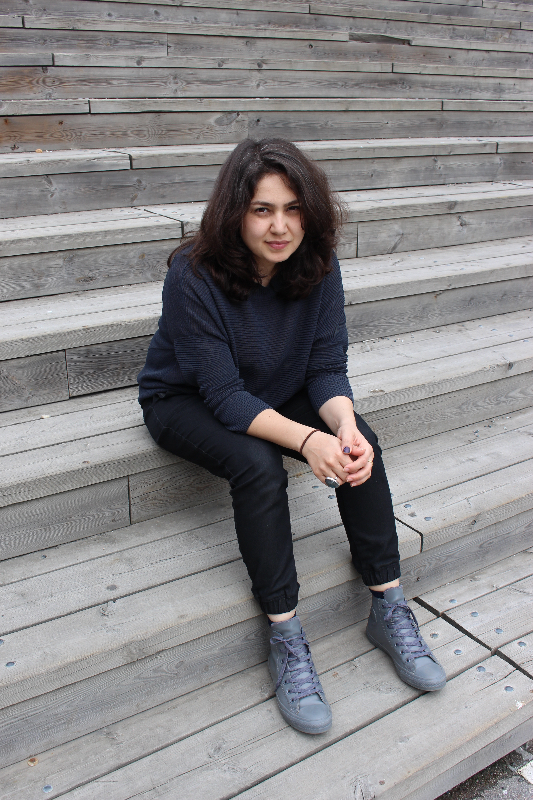
Can you tell us something about your recent activities?
I was mainly involved with writing and preparing the ground for a series of events in Tehran which will happen at a couple of artist’s studios. And then there is another project: I’m working on, which is about the aging of contemporary art objects, and their habitats. It will be a performative expedition happening in Tehran museum of contemporary art, and stories around the peculiar life of a few of the artworks that survived the post revolution removal of the collection from the museum’s walls. These artworks remained on view, while the rest end up in basement storage of the museum – the mausoleum.
On the side of writing, the most recent thing was a co-written text on works of Marie Louise Ekman, amazing artist and woman, published in the book of her retrospective exhibition at Moderna Museet, Stockholm, this summer.
How did you become a curator?
I hadn’t planned to become one. A series of engagements ended me up to that path. My interest in art theory- specially the representational discourse, the ways in which thoughts are distributed , circulated, and shared, experiments with formats of discussion and collective decision making, and alternative ways of education, or mediating in general. I followed these in parallel paths and at some point curatorial practice became a perfect junction.
But more specifically, my first curatorial experience started with an archival research and exhibition about a certain mode of exhibition making that predominated the Iranian art scene in 2000s; Group survey shows of works by Iranian artists held in Europe and north America, representing, and at the same time defining, “Iranian contemporary art”, through this representations. There was a boom, where more than 100 of such survey shows held between 2000-2010, nearly all of them curated by foreign curators, and the rest, mainly by diaspora Iranians.
These shows drastically transformed the production, material condition and even ethics of the local scene in a very short time. They were symptomatic of the socio-political changes of the time, but in lack of other exhibiting platforms and critical discourse, also acted as an unbelievably dominant force, affecting the scene.
That was when I was delved into the power dynamism around displaying structures and mediation of art. In fact, I was situated in a double edge setting, because the subject of research was being presented in form of an exhibition, and in Europe too. It was complicated what kind of narrative, displaying the archive would produce.
How was your experience as a curatorial member of the 11th Gwangju Biennale in 2016 in the Republic of Korea?
To put it very brief, the curatorial team all came from small scale art institutions and independent spaces, and we somehow tried to use the large scale structure of biennial -in terms of resource and visibility- to apply strategies of small scale art organisations, and bring forth the importance of their existence and approach in mediation, experimentation and providing a support structure for the artists.
We managed to give an artist fee to the participating artists for the first time in the history of the biennial. On the other hand we focused on what does it mean to embed the biennial locally. We used already existed art infrustructures in the city, and tried to make a meaningful relation between them, the local residents and the biennial. For example we collaborated with universities and artist run project spaces in Gwangju and Seoul to organise monthly programs of lectures, group crits, screenings, reading groups, artist talks, curated walks in the city, and communal dinning with the generous collaboration of commissioned artists who were traveling to korea for the research trips throughout the year. We also organized gatherings with different communities in the biennial neighborhood, months before the exhibition time, to talk about the biennial.
In terms of curatorial method, we posed few questions at the beginning, and then by inviting around 30 artists to visit Gwangju, having conversation with us, and making new commissions, developed the conceptual framework of biennial with them. It was incredibly intense and a valuable experience.
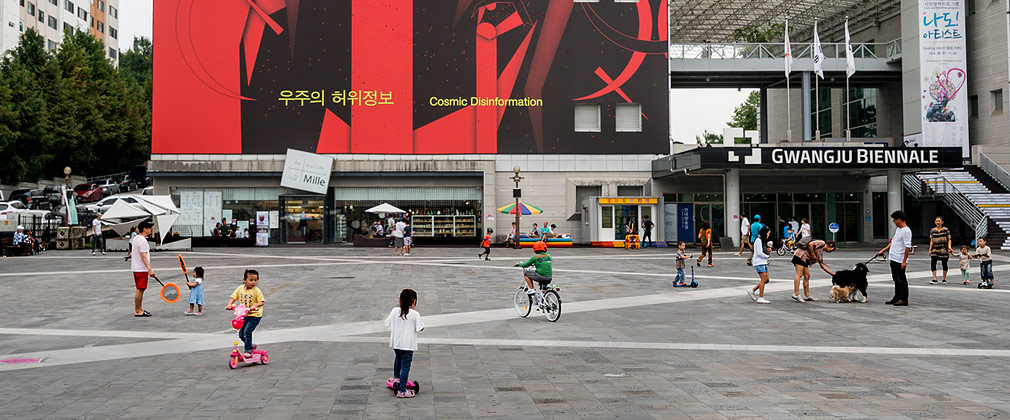
Can you tell us something about the Iranian art scene?
I grew up in an artist family and somehow witnessed different shifts of the post- revolution art scene, specially the visual arts; having a clear memory of the ways my mom’s artist friends survived the bleakest years of 80s by supporting each other, collective painting in nature, self educating, and putting up shows in their homes, while having 3 non-art related jobs to live.
For a certain period around late 90s the state tried a top-down investments in the “cultural section” and an open border policy, which was well functioned as a valve, by incorporating the dissenting intellectuals inside the country, and restoring relationship of the IRI (Islamic Republic of Iran) to the outside, in order to navigate the economic isolation. This was the 2000s, with all the geopolitical shifts in the region. Some artists maneuvered within this relative openness very smartly, yet in absence of local independent institutions, the mentioned survey shows backed up by government, commercial galleries, and gulf auctions, turned into monopolizing channels for visibility and recognition for artists. This pushed artists into competitive individualism, fragmented the scene and even broke the integrity of artists’ practice. At the same time, artists were not receiving enough feedback, if any at all, about their work, as they were always presented in a bundle and reviews were directed towards holistic introductions to the condition of life and culture in the IRI, instead of the artworks. Now we are experiencing a newer wave of privatization of public cultural institutions, while their content production is still systematically controlled.
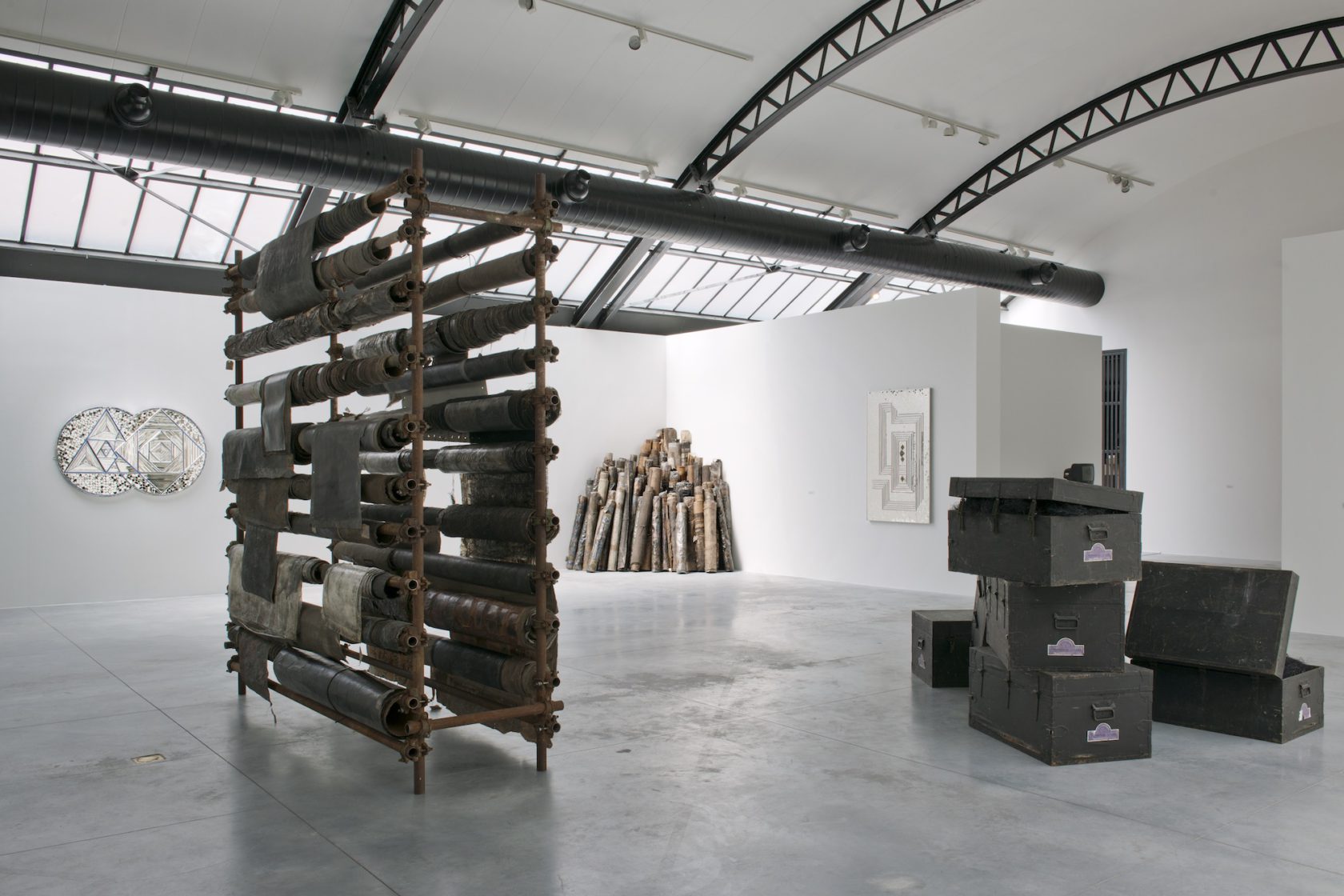
Which Iranian artist/art would you recommend?
The person behind the work is important for me. Apart from the artists that I like their works and their way of working, it has happened that I recommended artists whose work is not perfectly strong, but have developed a practice and need more support. Also in case of Iranian artists, I even promote some of them; specially the ones, that are not googleable, the material around their work is mainly non-English, or they don’t speak English or don’t have financial backup to study or go abroad. Iranian art scene is still very isolated comparing to the region. If these artists were in Beirut or even Ramallah with the same condition, they would have had much more of the visibility they deserve, I believe.
What is your biggest professional achievement until now?
Working with some of the artists that I like. I’m usually very careful about talking of hardships of working in Iran, as its often interpreted in unwanted ways. But it was a truly difficult path to be able to work with the international artists, while living in Tehran. For few years all the opportunities available to me, was making a show with Iranian artists in international venues. I did it once and decided that would be the last. Because no matter what you do, and how you try to mediate the show, at the end it’s received in a setup explained above.
While I’m very committed to the local scene, I didn’t want to function in that scope, and only as a tour guide to the local scene. I got engaged in other ways, like teaching at Tehran art university and co organising an independent art space in Tehran. And tried to find possibilities of working with the artists that I like their practice- either Iranian or international- which despite my will, was so far mainly possible outside the country. It’s a precarious situation overall. Even now that I was able to work internationally at a certain professional level, my accessibility to the events, artists, lectures and discussions, exhibitions, etc. is still very restricted. You might say there is internet. It is not the same. As a curator you need to be in the space and meet people in flesh. So then, I am expected to function in that professional level and rhythm, with a precarious nutrition.
I know what I don’t want to achieve though. I don’t think I would like to run a big institution. That rhythm of production doesn’t work for me. I prefer to work in small scale.
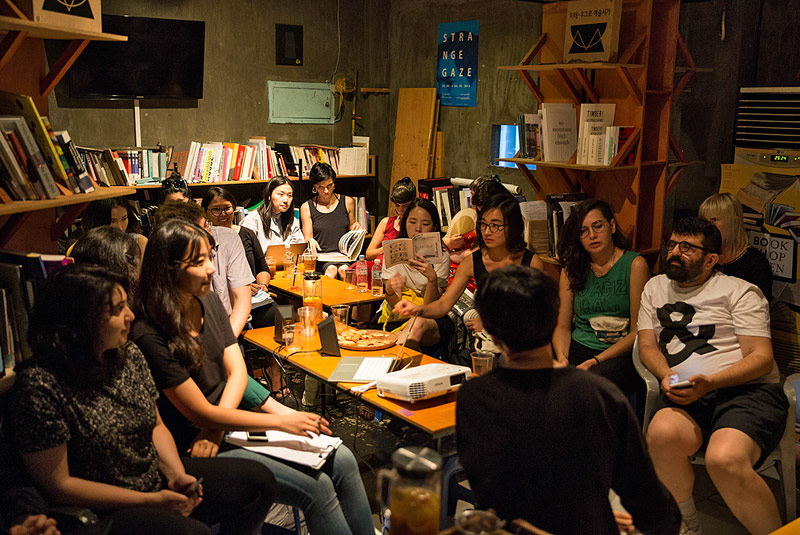
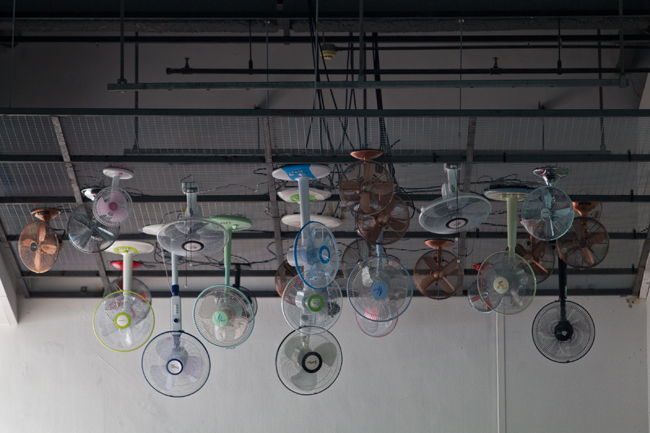
What do you consider as your greatest drive?
I think anger is definitely the most clear and forceful drive I could trace. That keeps me work in Tehran. The city is like a big “what if” as a friend put it. There is a huge urgency and potential to make or revive structures, alignments, practices, understandings, for which you need much focus to choose your fight. But then, there have been all these perpetual failures and aggressions when all the little steps in realizing the potentials have been blew in the air overnight.
The passion is to encounter great people, and think and together and work with them. They could be dead or alive. That is the best part of curating.
As a curator: What is your biggest merit? And what is your biggest flaw?
I think maybe same things in me turn up into both good and bad ends. Mainly being perfectionist, and getting emotionally involved with the work. These are the aspects which bring a kind of intensity, or a sharp edge in working process. For example perfectionism has saved me wherever I refrained from tentative job opportunities which had something wrong with them, or the people offering it. Some friends considered that as unnecessary pickiness, but keeping up that criteria was fruitful, because in the long run I ended up with better opportunities where I encountered people with shared criteria and work ethics that supported me. But at the same time perfectionism is my biggest hassle as well, it could lead to perpetual dissatisfaction, self exploitation or being a control freak, specially when I want to make the most of things within a limited resource and time.
Same mechanism with the emotional engagement. Or maybe once I find a better term for it. For me working out the relationships in a project is as important as working with ideas and artworks. Curating is also about “being with” the artists, and modes of negotiating with institutions and power structures. It’s a collaboration or in best case, a collective process, where the creative aspect is not necessarily in the concept, but also in the methods of working together.
The fact is, as much as you get “professionalized”, there is less time to spend on relationships. I try to slow down enough for that, and consider that as a merit.
On the other hand nothing could devastate me more than bad behavior and aggression in the working process. I might loose my whole motivation when exposed to that. I have been receiving this advice repeatedly from colleagues, that I should not get emotionally involved with the job. But I can’t. Maybe because deep down, I don’t believe in it enough.
Many of us work a lot. And finding concentration becomes vital. Not to get emotionally involved with complications and misbehaviors at work, means to keep up on an “energy saving mode”. But what is this over productivity for, if we self harm and cannot behave well with 5 people working with us? I know it sounds like a cliché slogan, but seriously. The whole thing would feel so pretentious and contradictory.
What's still on your curators' bucket list?
I don’t shop or pick. I think it’s important which vocabularies we use… curating is a mutual collaboration. In terms of future plans, what I like to do at the moment is to make shows in Tehran. Something which has not been possible so far.